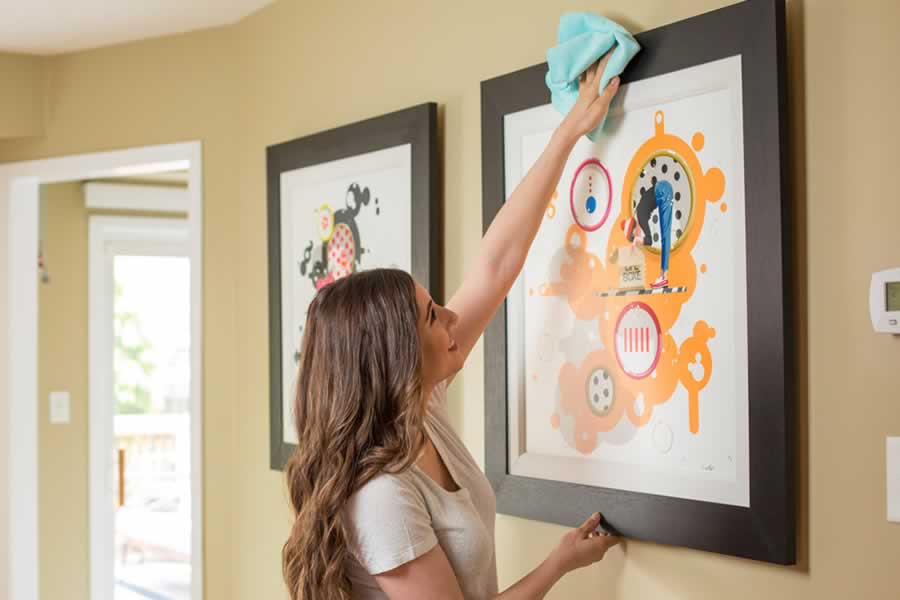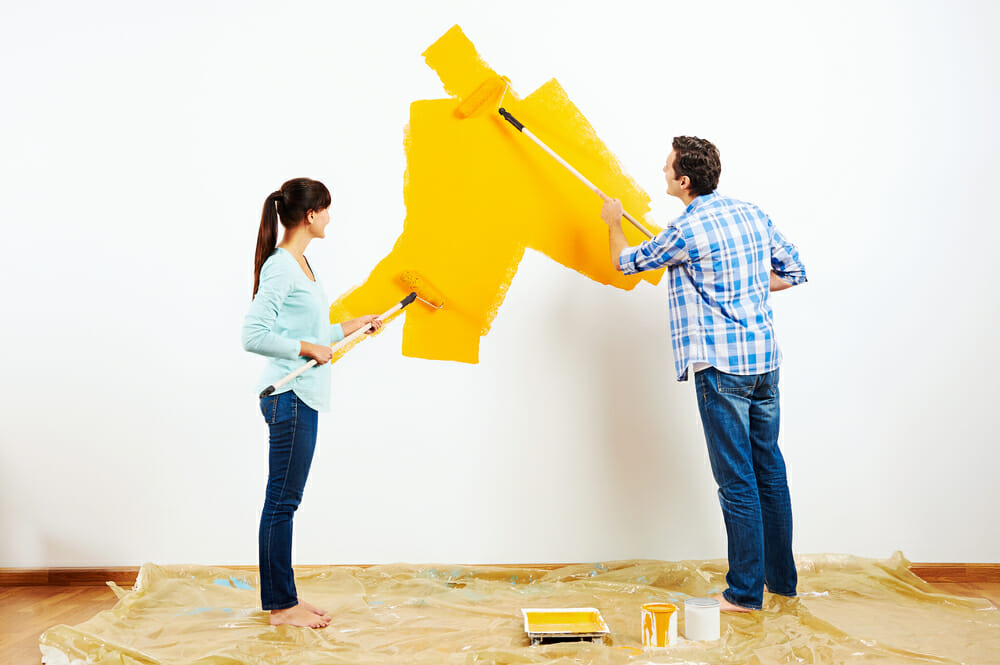When you have asthma, even the simple act of breathing can be difficult, so home renovation may seem impossible, especially when you think about wall painting. Drab walls may be awful to look at, but they sure are easier to stomach than paint fumes, dust flying around, and a number of other triggers and indoor air pollution that you could encounter.
You don’t have to settle for an unsightly interior, though. There are a number of ways people with asthma can refresh the look of their homes without suffering an asthma attack. And you can start by taking a look at these top five wall painting tips!
#1—Check to See If Your Home Has Lead Paint

Before you can start painting over your walls, you need to make sure your walls are smooth enough. If they aren’t, it’s likely you’ll have to sand the surface.
Sounds easy enough, right? Just get out your sanding device and work your way across the walls you plan to paint?
Well, it’s not quite that easy. Before even attempting to sand your walls, you should check to see if your home has lead paint. Lead is a toxic metal that was regularly used in paint for homes up until the late ‘70s. And sanding, scraping, or otherwise disturbing this material in any way can turn it into an airborne hazard, as its particles float around in the air waiting to be inhaled.
This hazard can pose an even harsher threat to people with asthma. Their lungs are already chronically inflamed, so adding an additional toxic irritant is no good.
To avoid unwanted exposure to lead, you’ll want to bring in a specialist who can remove the lead paint from your home properly.
#2—Take Precautionary Measures Against Dust

Another step you’ll want to take before sanding your walls is to prepare yourself for dust. No matter what, sanding will send particles of dust and other matter into the air. Your lungs aren’t going to like it, but you can at least reduce how poorly they react to these particles.
Make sure there’s fresh air flowing through the room you’re painting. This will help reduce the number of irritants that stay floating in your immediate area.
For additional protection, consider wearing a face mask that’s designed to filter the air around you.
Lastly, remember to stock up on asthma medication like ADVAIR DISKUS®. To avoid taking up too much of your renovation time, you can easily ship your medication straight to your home through an international or Canadian pharmacy referral service, such as Rx Connected.
#3—Look for Paint That’s Been Approved for Asthmatic Use

Once you’ve done all the sanding and protected yourself from dust particles, you’ll want to start painting.
First, consider the colors you’d like to surround yourself with.
While you think over your style preferences, try to look for colors and brands that have been approved for asthmatic use. Many paints have volatile organic compounds (VOCs) in them, and these components can be a common trigger for asthma. But paints that have been certified through programs like the asthma & allergy friendly® Certification Program will make sure that the level of VOCs and other irritants are at an appropriate level for your particular condition.
With properly certified paint, you won’t have to worry so much about having an asthma attack while you add your desired color to your interior walls.
#4—Maintain a Steady Flow of Clean Air

Throughout your painting session, you’re going to want to have as much clean air available to you as possible. Opening windows to let fresh air in is a start. But it’s not a complete solution. It won’t get rid of all the irritants in the air, whether it’s the minor amount from your asthma-approved paint or the particles produced from your time spent sanding.
So, what else can you do?
Well, you’ll want to add devices like air purifiers. These devices will filter out the remaining problem particles that are in the surrounding air.
You might also want to consider a vacuum with a high efficiency particulate air (HEPA) filter. The filter acts much like an air purifier, so once you’re done painting, you can ensure that the room stays relatively clean by vacuuming any remaining particles that might be on the floor.
After all that, pat yourself on the back. You haven’t triggered your asthma, and you have a lovely looking room to boot!






